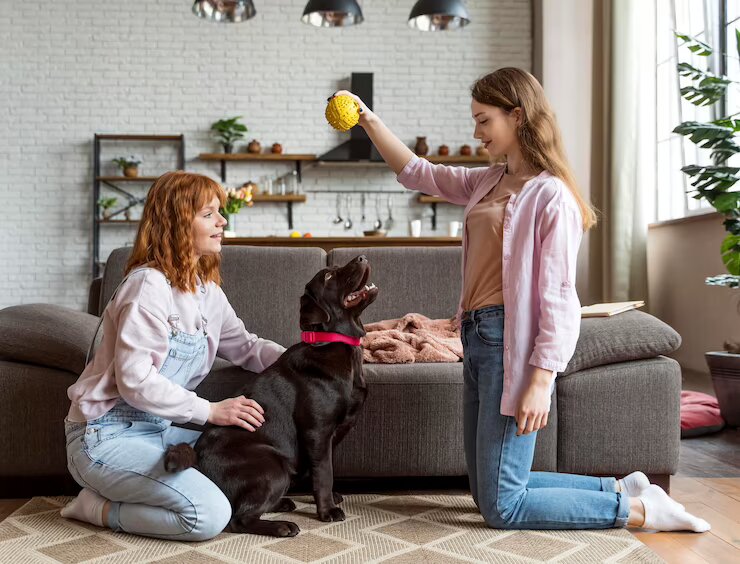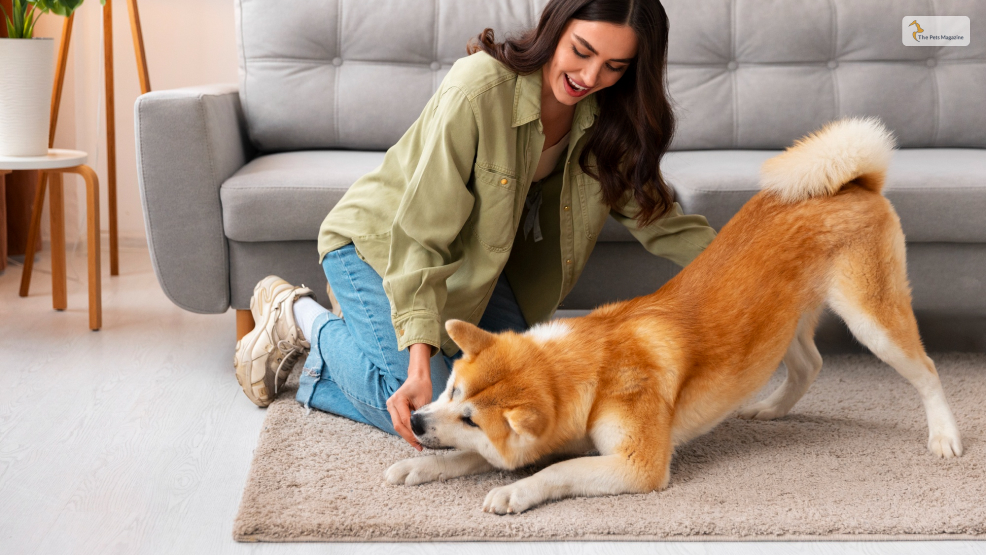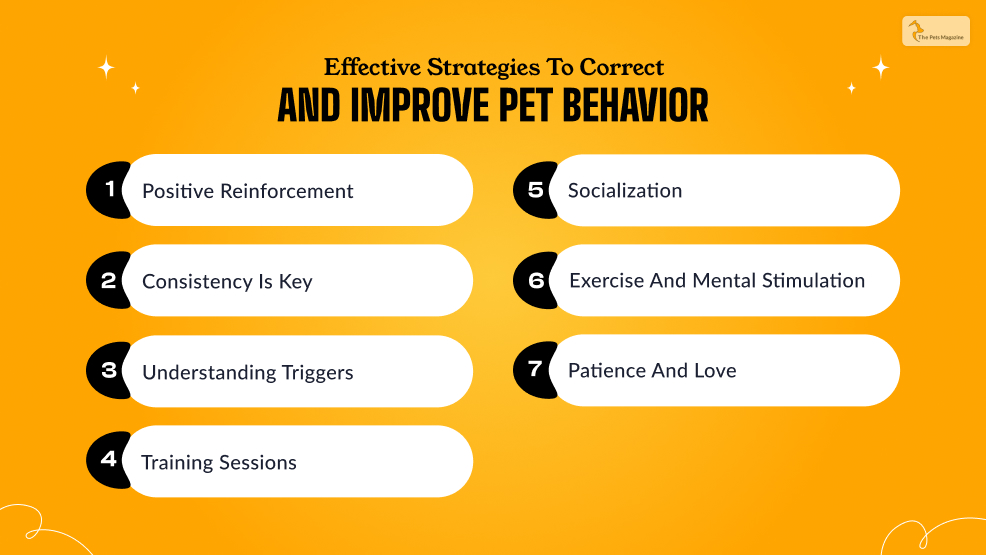Understanding And Managing Your Pet’s Behavioral Needs


If you’re anything like me, your furry (or not-so-furry) friends are a huge part of your life. They bring joy, companionship, and sometimes a bit of chaos into our homes. But let’s be honest, understanding their behaviors can sometimes feel like trying to solve a mystery.
Why does Fluffy suddenly decide that 3 AM is the perfect time for a Zoomies session? Or why does Max bark at the mailman like he’s an intruder from another planet? Well, the truth is, there is a lot more to our pet’s behavior than just being cute or annoying. They have feelings, thoughts, and needs, just like us. And sometimes, those needs aren’t met, leading to behaviors that might seem strange or even problematic.
In this article, we’ll dive into the world of pet behavior. We’ll discuss common issues, like excessive barking, scratching, or aggression. But we’ll also explore the why behind these behaviors and what you can do to help your furry friend feel happier and healthier.
Diagnosing The “Why” For Bad Behavior

The “why” of why your pet behaves badly is crucial for pet owners to understand. There’s usually a reason behind poor attitude, and it may be something as simple as your pet feeling neglected and wanting attention.
Evaluating what is going on with your pet is the first step you need to take as a responsible pet owner. Look at your pet’s environment and ask yourself questions, such as the following:
- Does my pet feel threatened?
- Is my pet uncomfortable?
- Does my dog have car anxiety?
- What is happening around my pet when it acts this way?
Ask and figure out the where, when, why, and how so you understand what is causing the behavior. Then you can work to prevent triggers and intervene quickly when you notice a change for safety.
Reading Your Pet’s Body Language

Pets cannot communicate with speech; rather, they utilize their body language to tell us when something is making them feel a specific way. Taking note of your pet’s body language can clue you in whether it is feeling anxious, scared, content, or sad.
Here are some clues to help you tune into your pet’s body language:
- Anxious – most pets display feeling anxiety through lots of nervous habits, including lip licking, pacing, frequent shaking, or panting.
- Scared or Threatened – pets show a lot of tension when they feel threatened. You often may notice their ears lay flat back, their tail is tucked, they are stiff or hair is sticking up on the back of the neck or near the tail. This feeling may often have your pet react with aggression, so your pet may hiss, growl, or even attempt to bite.
- Alert – pets feel alert when you notice their ears straight up or perked forward, their head tilted to the side as if they hear something, and their tail up and straight.
- Content – a happy and relaxed pet often has a loose body and submissive behavior such as laying on its back or side. They often will nuzzle or look for affection and appreciate lots of pets, responding with licks.
Managing Certain Pet Behaviors

Now that you have some background and can understand and recognize your pet’s behavior, you can more effectively work to correct it. Prevention can often help ensure that your pet doesn’t behave badly, but if you note it is happening, there are some steps you can take.
Aggressiveness
Aggressive behavior in your pet is usually caused by feeling threatened or being in pain. If a pet is afraid of something touching a part of its body, it might retreat or act out.
If you suspect your pet suffers from pain, you should contact your veterinarian for an examination. For example, if your dog keeps throwing up, acts aggressively when touched, or doesn’t want to eat, this is a telltale sign that something is wrong, and you need to call the vet.
Threatened pets often react with aggression too, so consider if something makes them feel this way. For example, are they eating and acting out when someone comes near? Could they be overstimulated from too much rough play and need a space to relax?
Vet techs at Bond Vet’s Arlington, DC animal hospital share, “Take time to evaluate the situation, and determine what you can do to help your pet feel safer and more secure”. Some steps may include giving your pet its own area (not a crate) within the home and having the pet eat without anyone bothering it.
Separation Anxiety
Pets often feel anxious when they are left alone. This is because pets, especially dogs, often form strong bonds with their owners and may experience anxiety when separated. Moreover, dogs and cats that were not adequately socialized from a young age may be more prone to separation anxiety.
If you notice when you leave the house, your pet resorts to destructive behavior like tearing up floors and furniture, this is a sure sign that they are suffering from separation anxiety.Pacing, panting, and lots of licking also indicate that your pet is feeling anxious.
Have you noticed your pet soils or urinates in the house when you leave? Give your pet proper house training, and seclude your pet if you need to leave the home to limit destructive behavior. You might also consider getting a pet sitter to come to your home and keep the animal company if your pet has trouble being separated.
Restlessness
Another reason why your pet may be acting weirdly, like tearing toilet rolls and scratching furniture, is because they are bored and restless. This is actually a big problem for pets. Because our cats and dogs are active, intelligent animals that require a lot of mental and physical stimulation, if they’re not getting enough, they may become restless.
So, make sure to provide your pets with activities, items, and outlets to stimulate them mentally. For instance, cats enjoy scratching posts so they don’t ruin furniture, and dogs can spend a lot of time working on a chew toy, food puzzle, or large bone.
Exercise is another great way to expand your pet’s energy. Ensure you’re taking your pet for many walks and runs, engaging in playtime, or even getting some outside training. Rest is a priority, too, so provide your pet with a comfortable place to relax with a blanket, bed, or other comfort items nearby.
Effective Strategies to Correct and Improve Pet Behavior

Let’s take a look at some effective strategies to correct and improve your pet’s behavior.
Positive Reinforcement
One of the most effective methods is positive reinforcement. This involves rewarding your pet for good behavior with treats, praise, or playtime. For example, if your dog sits on command, give them a treat immediately. This helps them associate the behavior with a positive outcome.
Consistency is Key
Pets thrive on routine and consistency. Ensure everyone in the household is on the same page regarding rules and commands. If one person allows the dog on the couch and another doesn’t, it can confuse your pet and make training more difficult.
Understanding Triggers
Identify what triggers your pet’s unwanted behavior. Is your cat scratching the furniture because they don’t have a scratching post? Is your dog barking excessively due to boredom or anxiety? Understanding the root cause can help you address the behavior more effectively.
Training Sessions
Regular, short training sessions can be very beneficial. Keep them fun and engaging, and always end on a positive note. This helps reinforce good behavior and keeps your pet mentally stimulated.
Socialization
Expose your pet to different environments, people, and other animals. Proper socialization can prevent fear and aggression. Start slowly and gradually increase exposure to new experiences.
Exercise and Mental Stimulation
A tired pet is a well-behaved pet. Ensure your pet gets plenty of physical exercise and mental stimulation. Puzzle toys, interactive games, and regular walks can help reduce unwanted behaviors caused by excess energy.
Patience and Love
Lastly, remember that patience and love go a long way. Behavioral changes take time, and it’s important to stay calm and positive throughout the process. Celebrate small victories and keep building on them.
Importance of Behavioral Management For Better Pet-Owner Relationships
Learning to read your pet’s behavior goes a long way to helping you figure out and identify its behavior so you can better manage it. Prioritize your pet’s wellness by scheduling vet visits and getting all its vaccines to rule out any possible pain or medical conditions.
Determining your pet’s needs and providing all those things can help reduce situations where your pet’s behavior is troublesome. If you are concerned or don’t feel your efforts are yielding results and changes in your pet’s behavior, you can contact an animal behavioral specialist for more assistance. Both training and behavior management are vital for owners to instill in their pets to supply a healthy, happy life at home.
Read Also:








Leave A Comment